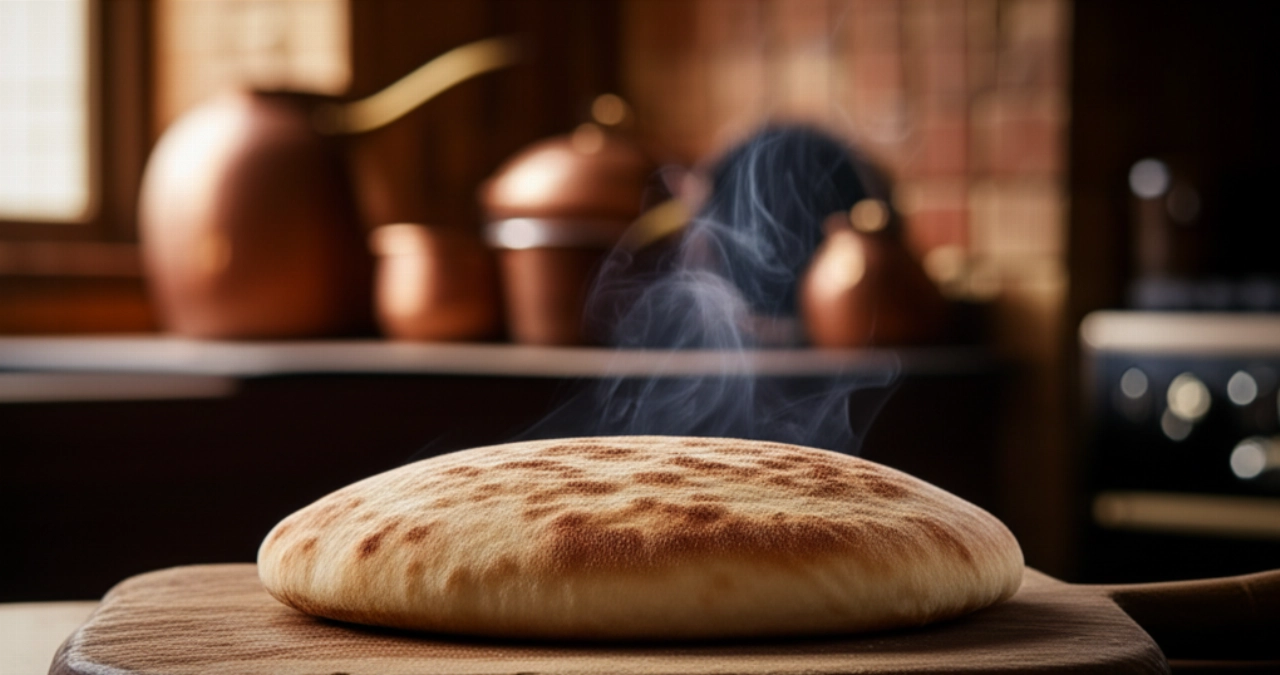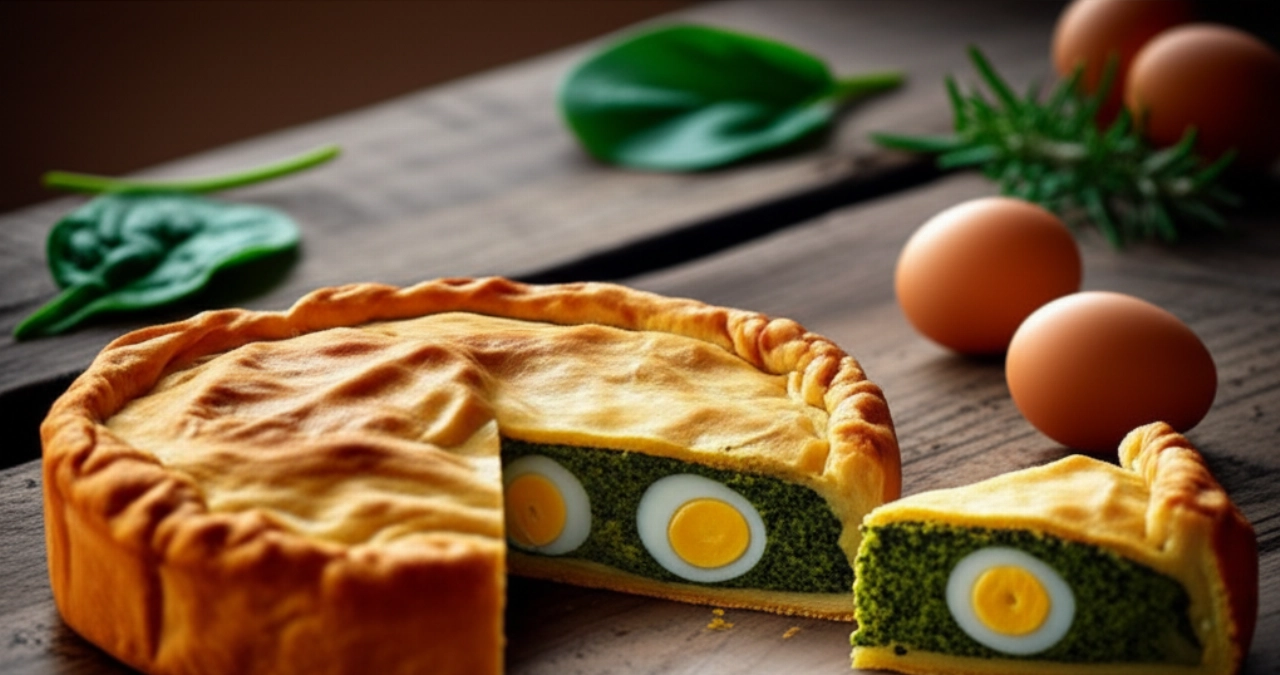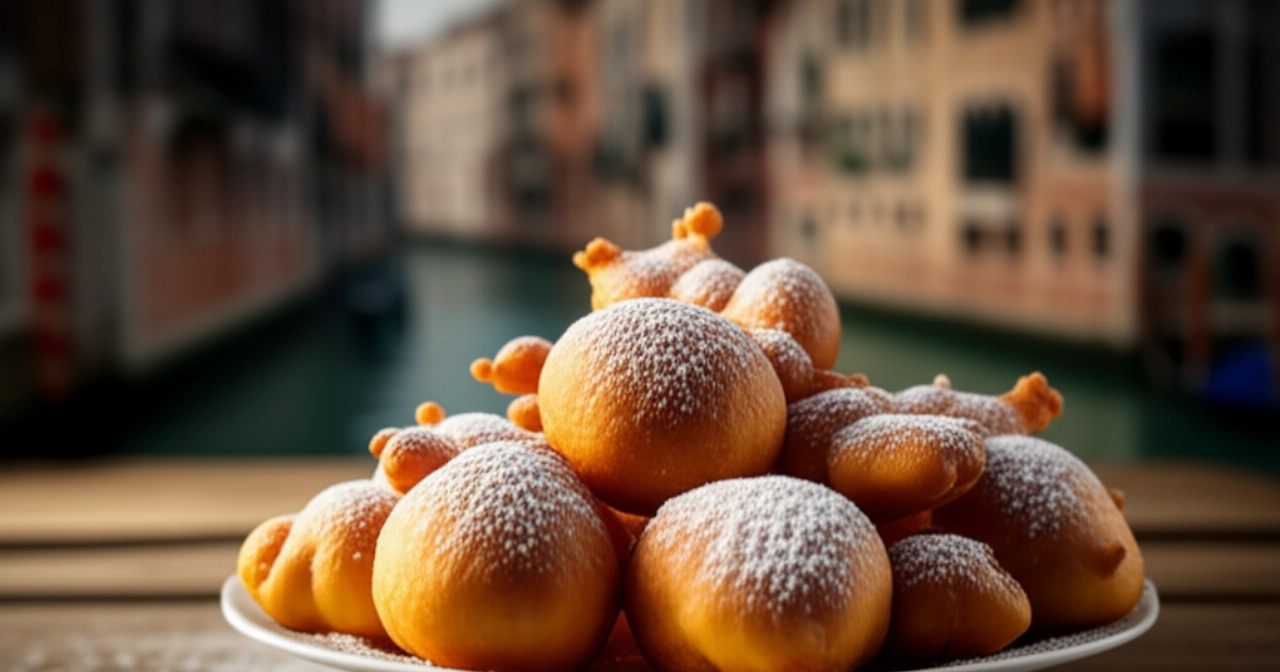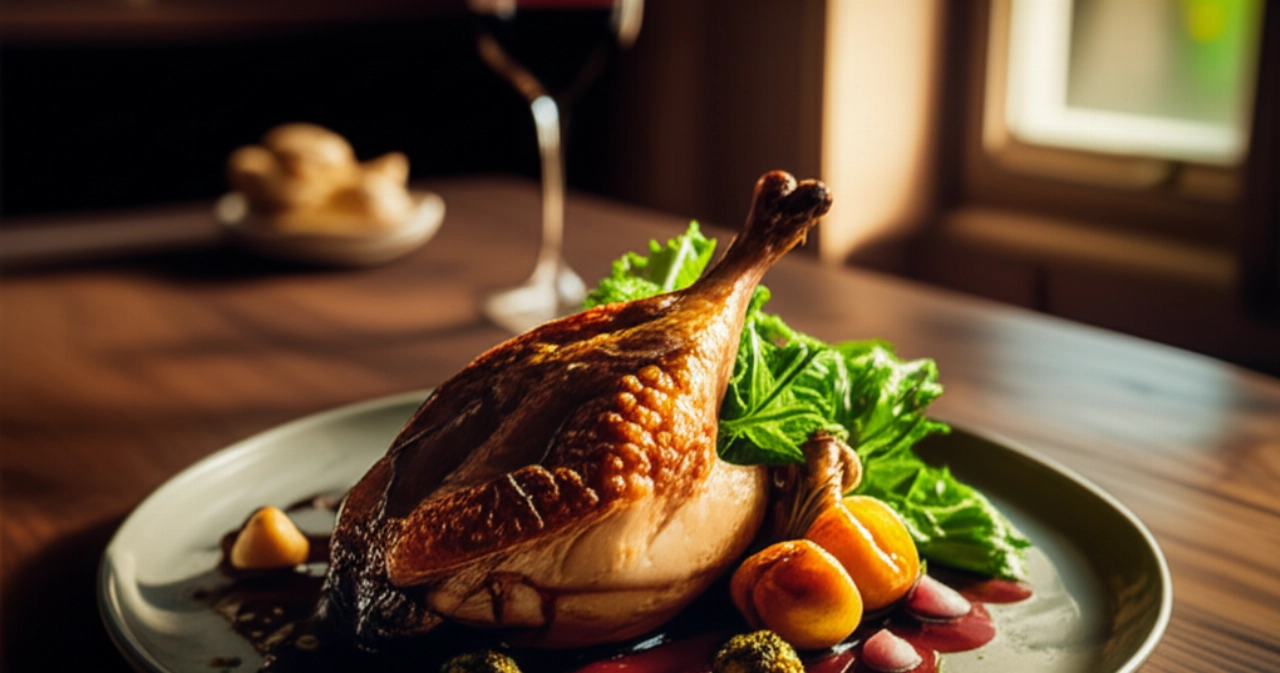Imagine a scent that takes you straight to the heart of Umbria, an ancient flavor, that of freshly baked Torta al Testo, with its golden crust and soft interior, ready to welcome every delight. It's more than just bread; it's a symbol of conviviality, a warm embrace that tastes of home and tradition.
Perhaps you've tried making it, maybe following recipes found here and there, but the result wasn't what you hoped for: too hard, too dry, or not authentic enough. Finding the true recipe, the one that guarantees success, the one that makes you say "this is Grandma's Torta al Testo!", might seem like a challenge, a small obstacle between you and your desire for culinary perfection.
But don't worry, you're in the right place. Here at Search Recipes, your trusted grandma chef is ready to reveal all the secrets to preparing an Umbrian Torta al Testo so perfect it will seem like you bought it from the village bakery. I'll guide you step by step, guaranteeing a foolproof result, whether you have the traditional cast iron "testo" or you'll use a simple non-stick pan. Forget your fears, success is guaranteed!

Umbrian Torta al Testo: The Ingredient Choice That Makes All the Difference
For a respectable Torta al Testo, the quality and choice of ingredients are fundamental. It's not just about a list, but about understanding the "why" behind each element. Trust me, every detail counts for that final result that will make your eyes sparkle.
- Soft Wheat Flour "00" or "0": This is the base of our dough. "00" flour will give you a more delicate result and an easier dough to work with, while "0" will add a rustic touch and a more intense flavor. Choose the one you prefer; the important thing is that it's of good quality. Do not use flours that are too strong or whole wheat, as they would change the final consistency too much.
- Lukewarm Water: Not cold, not boiling. Lukewarm water helps dissolve the salt and makes the dough more elastic and workable. It's like a small hug that prepares the flour to transform into something magical.
- Fine Salt: Essential for flavor. Don't overdo it, but don't forget it! Salt not only flavors but also gives structure to the dough.
- Baking Soda (a pinch, optional): Many traditional Torta al Testo recipes do not include brewer's yeast, relying on cooking for its consistency. A very small pinch of baking soda, if desired, can help make the dough slightly softer and less "gummy," without, however, creating actual leavening. It's a trick some grandmas use for an extra touch of softness.

Mistakes to Avoid for a Perfect Torta al Testo (and How to Prevent Them)
Torta al Testo is simple, yes, but like everything simple, it hides small pitfalls that can compromise the final result. Don't worry, I'm here to help you avoid every misstep. Learn from these common mistakes, and success will be guaranteed!
- Dough Too Hard or Too Soft: If the dough is too hard, your Torta al Testo will be dry and difficult to chew. If it's too soft, it will be difficult to handle and won't hold its shape during cooking. The right consistency is elastic, soft but not sticky. Add water or flour one tablespoon at a time until you reach perfection.
- Not Kneading the Dough Enough (or Too Much): The dough needs to be kneaded just right. Not too little, otherwise the gluten won't develop, and the flatbread will be crumbly. Not too long, otherwise it will become "gummy." Knead it until it's smooth and elastic, about 5-10 minutes by hand.
- Wrong Cooking: This is perhaps the most common mistake. A "testo" (or a pan) that isn't hot enough will make the flatbread pale and rubbery. Too hot will burn it outside while leaving it raw inside. The key is constant, medium-high heat, and the patience to flip it at the right time.
- Not Letting It Rest: Even if there's no brewer's yeast, a short rest (even just 15-20 minutes) after kneading allows the gluten to relax, making the dough easier to roll out and the flatbread softer. Don't skip this step!

Grandma's Secret: Cooking on the Testo (or in a Pan) That Works Magic
The true heart of Torta al Testo is not just the dough, but its cooking. This is where the magic happens, transforming a simple disc of dough into a masterpiece of textures. My grandma always said that the "testo" "feels" the dough, and that you have to listen to it. And she was right!
If you are lucky enough to own a real cast iron testo, you're halfway there. Heat it slowly over the fire (or in the oven) until it's scorching hot. You can check by sprinkling a few drops of water: if it sizzles and evaporates immediately, it's ready. Cast iron retains and distributes heat evenly, creating that unmistakable crust.
But don't despair if you don't have a testo! A thick-bottomed non-stick pan or a cast iron skillet will do an excellent job. The important thing is that it's very hot and that the heat is distributed evenly. Don't use thin pans; it would burn immediately!
The secret is constant temperature and patience. Cook the flatbread over medium-high heat, flipping it often (every 3-5 minutes) to ensure even cooking and that golden, crispy crust on both sides, while the inside remains soft and perfectly cooked. You'll see bubbles form on the surface: that's a great sign!
Let's Prepare Umbrian Torta al Testo Together: The Step-by-Step Guide
Ingredients:
- 500 g (approx. 4 cups) of soft wheat flour "00" or "0"
- 250-300 ml (approx. 1 to 1.25 cups) of lukewarm water (quantity may vary slightly)
- 10 g (approx. 1.5 teaspoons) of fine salt
- A pinch of baking soda (optional, for extra softness)
Tools:
- Large bowl
- Pastry board or work surface
- Cast iron testo or thick-bottomed non-stick pan
- Rolling pin
Instructions:
- Prepare the Dough: In a large bowl, combine the flour and salt. If using baking soda, add it now. Mix well. Begin adding the lukewarm water gradually, mixing with a fork or your hands.
- Knead the Dough: Once the dough starts to come together, transfer it to a lightly floured pastry board. Knead vigorously for about 5-10 minutes, folding and pressing it onto itself, until you get a smooth, elastic, and no longer sticky ball of dough. The consistency should be soft but compact.
- Let It Rest: Form the dough into a ball, cover it with a clean cloth or plastic wrap, and let it rest at room temperature for at least 20-30 minutes. This step is crucial to make the dough easier to roll out.
- Prepare the Testo (or Pan): While the dough rests, place your cast iron testo over medium-high heat or your non-stick pan. It needs to get very hot, for at least 10-15 minutes. If you have a testo, you can also heat it in the oven at 200°C (400°F) for 20 minutes.
- Roll Out the Flatbread: Take the dough and, with the help of a rolling pin, roll it out on a lightly floured pastry board. You should get a disc about 1-1.5 cm (0.4-0.6 inches) thick and slightly smaller in diameter than your testo or pan. It shouldn't be too thin, otherwise it will become crispy like a piadina, nor too thick, otherwise it won't cook well inside.
- Cook the Torta al Testo: Carefully transfer the dough disc onto the hot testo or pan. Cook for about 5-7 minutes per side, or until you see bubbles on the surface and the base is golden with typical dark spots. Flip the flatbread multiple times during cooking to ensure uniform browning and to prevent it from burning. Total cooking time can vary from 15 to 25 minutes, depending on thickness and heat.
- Serve Immediately: Once cooked, transfer the Torta al Testo to a cutting board. It's delicious hot, freshly made!
Tips and Frequently Asked Questions about Umbrian Torta al Testo
I know you might still have some doubts, and that's normal! Here are the answers to the most common questions, to clear up any uncertainty.
- Can I make it without a cast iron testo? Absolutely yes! A good thick-bottomed non-stick pan or a cast iron skillet (like those for crepes or griddles) work perfectly. The important thing is that they are very hot and retain heat.
- How can I store leftover Torta al Testo? If you have any leftovers (which is rare, I assure you!), you can store it wrapped in a clean cloth at room temperature for one day, or in a food bag in the refrigerator for 2-3 days. To reheat it, you can pass it back on the testo or in a pan, or even in a toaster, to regain its crispiness.
- What are the best fillings for Torta al Testo? Torta al Testo is incredibly versatile! Classic Umbrian fillings include prosciutto crudo (especially from Norcia), sausages and sautéed wild greens (discover our recipe here), cheeses like pecorino or stracchino, or even roveja. But you can fill it with whatever you like best: cured meats, fresh cheeses, grilled vegetables. It's also excellent with Nutella for a sweet version!
- Why is my Torta al Testo hard or rubbery? This can happen for several reasons: dough too hard, kneaded too little, or cooked over too low heat. Make sure to knead well, give it the right resting time, and cook on a very hot surface over medium-high heat, flipping it often.
- Can I freeze the dough or the cooked flatbread? Yes, you can freeze the raw dough wrapped well in plastic wrap. Thaw it in the refrigerator before rolling it out and cooking. You can also freeze the already cooked flatbread, wrapped in plastic wrap. To reheat it, transfer it directly from the freezer to the testo or a pan over medium heat, flipping it often.
There you have it! Now you no longer just have a recipe, but all the secrets to bring to the table a dish that tastes of home, tradition, and love. Umbrian Torta al Testo is an experience, a journey of taste that will conquer everyone.
Don't be afraid to experiment. Cooking is an act of creativity, a way to express yourself. But start with this solid and foolproof base, and you'll see that applause won't be lacking. It will be a guaranteed success, and you'll be the grandma chef of the situation!
Have you tried our recipe? We're very curious to see your masterpiece! Leave a comment below, tell us how it went, or share a photo on Instagram by tagging @CercaRicette.it. And if you loved this Torta al Testo, you can't miss our recipe for a Soft and Very Tall Focaccia or the traditional Umbrian Easter Crescia. The kitchen awaits you!





